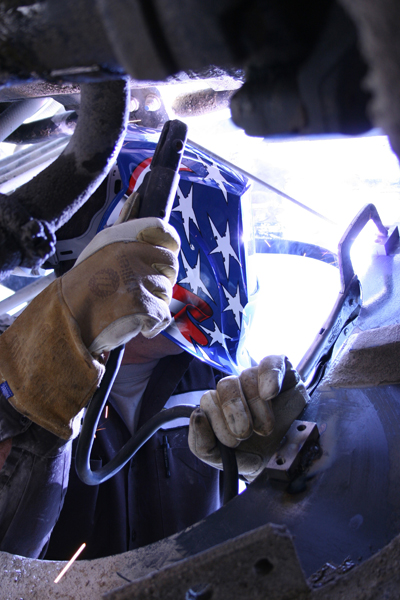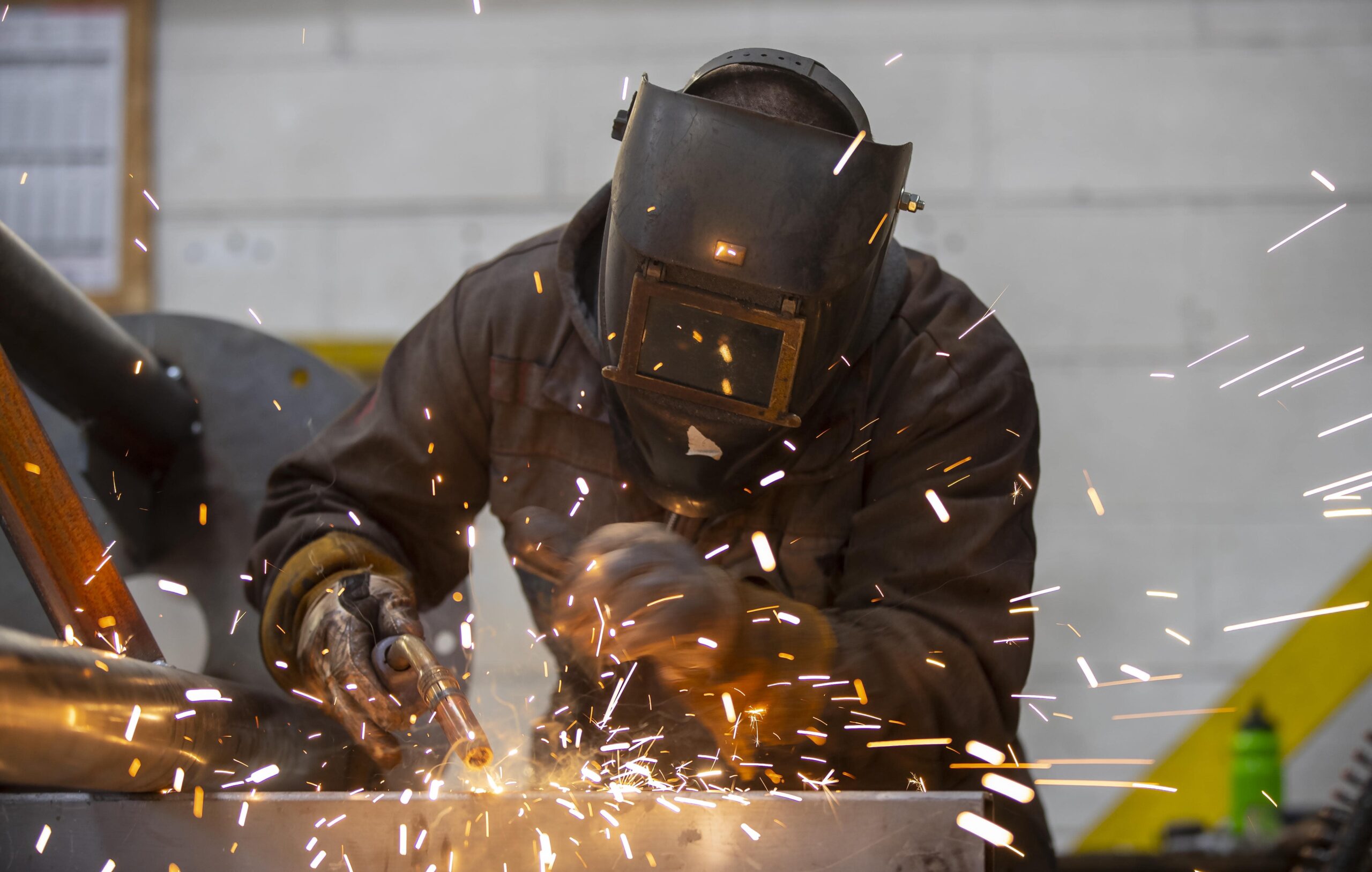Everything about Welding: Key Insights Into Techniques and Best Practices for Success
Welding incorporates a variety of techniques, each matched for certain materials and applications. Recognizing these techniques, such as GMAW, SMAW, and TIG, is vital for accomplishing suitable results. The best devices and safety methods can not be ignored. As preparation and repairing play vital functions in the welding procedure, grasping these components can significantly improve the quality of the last item. What are the key aspects that guarantee an effective weld?
Understanding Different Welding Methods
Welding strategies encompass a variety of techniques, each matched to certain applications and products. Among the most common methods are Gas Metal Arc Welding (GMAW), Secured Steel Arc Welding (SMAW), and Tungsten Inert Gas Welding (TIG) GMAW, likewise referred to as MIG welding, is popular for its speed and flexibility, making it optimal for slim materials. SMAW, or stick welding, is favored for its simplicity and effectiveness in outside environments, specifically with thicker steels. TIG welding provides accuracy and control, making it ideal for complex job and non-ferrous metals (Welding). Each method has its one-of-a-kind benefits and factors to consider, enabling welders to choose the very best approach based upon the job's demands, material type, and preferred outcomes. Understanding these methods is important for successful welding
Crucial Welding Devices and Tools
While numerous welding methods call for certain abilities, the right tools and devices are equally necessary for achieving quality results. Crucial welding equipment consists of welding makers, which differ relying on the technique-- such as MIG, TIG, or stick welding. Safety gear, consisting of aprons, safety helmets, and gloves, guarantees safety and convenience throughout the procedure. Additionally, fixtures and clamps assist safeguard materials in place, making sure accuracy in welds. Consumables like welding rods, cord, and shielding gas are likewise crucial elements that affect the quality of the weld. Additionally, tools such as mills and cutters assist in surface prep work and post-weld finishing, adding to an expert end result. Buying top quality devices eventually boosts the effectiveness and effectiveness of welding projects.
Security Practices in Welding
Proper safety methods are essential in the welding sector to protect workers from prospective threats. Welders must use ideal individual safety tools (PPE), consisting of headgears with appropriate shading, handwear covers, and flame-resistant garments. Adequate ventilation is crucial to decrease exposure to harmful fumes and gases produced during the welding process. Additionally, employees should be learnt the proper handling of welding devices to avoid crashes. Fire precaution, such as maintaining combustible materials away from the welding area and having fire extinguishers readily offered, are needed. Regular examinations of tools and work spaces can assist determine prospective dangers prior to they lead to crashes. By adhering to these safety and security practices, welders can produce a much safer working atmosphere and reduce threats connected with their trade.
Preparing Materials for Welding
Preparing materials for welding is an important step that substantially affects the top quality and integrity of the end product (Belgrade). Proper prep work includes cleaning the surfaces to remove impurities such as rust, oil, and dirt, which can jeopardize the weld. Techniques such as grinding, sanding, or making use of solvents are generally used to attain a tidy surface. In addition, guaranteeing that the products fit together comfortably is essential; gaps can lead to weak welds. It's additionally vital to think about the alignment and positioning of the parts, as this will affect the simplicity of welding and the final outcome. Selecting the ideal filler product and guaranteeing compatibility with the base steels is important for attaining strong, long lasting welds.
Tips for Achieving High-Quality Welds
Achieving high-grade welds calls for attention to information and adherence to best techniques throughout the welding process. Correct joint prep work is essential, making sure surface areas are free and tidy from impurities. Selecting the appropriate filler material and welding technique based upon the base steels is crucial for excellent bonding. Preserving constant traveling rate and angle while welding can stop flaws and advertise uniformity. In addition, managing warm input is vital; extreme heat can lead to bending and damaged joints. Consistently checking the welds during the process allows for immediate modifications if required. Using proper post-weld treatments, such as cleaning and stress and anxiety alleviation, can improve the longevity and honesty of the weld, ultimately making certain an effective end result.
Repairing Usual Welding Issues
Welding often presents difficulties that can affect the high quality and integrity of the end product. Typical issues such as porosity, inconsistent weld grains, and overheating can arise, each calling for specific troubleshooting methods. Recognizing these problems is vital for welders to boost their skills and achieve perfect outcomes.
Porosity Issues Clarified
Porosity can frequently be neglected, it remains a critical problem in welding that can jeopardize the honesty of an ended up product. Porosity refers to the visibility of little gas pockets within the weld grain, which can lead and compromise the joint to early failure. This issue usually emerges from contaminants, dampness, or improper shielding gas protection throughout the welding process. To minimize porosity, welders need to confirm that the base products are completely dry and clean, utilize suitable protecting gases, and keep consistent welding criteria. On a regular basis examining the equipment and environment can additionally aid identify potential problems prior to they show up in the weld. Addressing porosity effectively is vital for accomplishing strong, long lasting welds that satisfy top quality criteria.

Inconsistent Weld Beans
Inconsistent weld grains can considerably affect the quality and strength of a completed product. Numerous factors add to this problem, including improper travel rate, inaccurate amperage settings, and irregular electrode angles. When the welder relocates too rapidly, a bead may show up narrow and lack infiltration, while relocating as well gradually can cause too much build-up. Additionally, utilizing the incorrect amperage can lead to either damaging or excessive spatter, both of which compromise weld honesty. The welder's technique, such as irregular lantern motion, can also bring about irregular bead look. To alleviate these troubles, welders need to concentrate on keeping steady, regulated activities and making sure correct tools settings to achieve uniformity in their welds. Consistency is key to achieving reputable and strong welds.
Getting Too Hot and Warping Issues
Extreme heat during the welding process can bring about considerable getting too hot and deforming problems, affecting the architectural stability of the workpiece. These problems usually show up as distortion, which can endanger placement and fit-up, making additional assembly testing. Aspects adding to overheating consist of the selection of welding criteria, such as voltage and travel speed, as well as the kind of product being welded. To minimize these concerns, welders should maintain constant traveling rate and ideal warmth input while keeping an eye on the workpiece temperature level. Additionally, pre-heating or post-weld warmth treatment can assist ease anxieties brought on by fast air conditioning - Montana Mobile Welding and Repair Fabrication. Routine evaluation and adherence to finest methods are vital in preventing getting too hot and making sure the long life and integrity of welded structures
Regularly Asked Concerns
What Are the Job Opportunities in the Welding Industry?
The welding industry uses diverse job opportunities, consisting of settings as welders, inspectors, designers, and instructors. Professionals can work in production, construction, aerospace, and vehicle markets, taking advantage of solid need and competitive wages in different functions.
Just How Can I Improve My Welding Rate Without Compromising Quality?
To boost welding rate without sacrificing high quality, one need to practice effective strategies, keep devices, optimize settings, and enhance hand-eye control. Normal training and seeking comments can also substantially add to attaining much faster, top quality welds.
What Certifications Are Available for Welders?
Many certifications exist for welders, consisting of those from the American Welding Society (AWS), the National Facility for Construction Education And Learning and Research Study (NCCER), and various industry-specific organizations. These qualifications enhance employability and show skill efficiency.
How Does Welding Affect the Characteristics of Metals?
Welding influences the residential or commercial properties of metals by altering their microstructure, which can lead to changes in ductility, stamina, and solidity. Warm input and cooling rates during the process greatly affect these material attributes.
Can I Bonded Dissimilar Metals Together?
